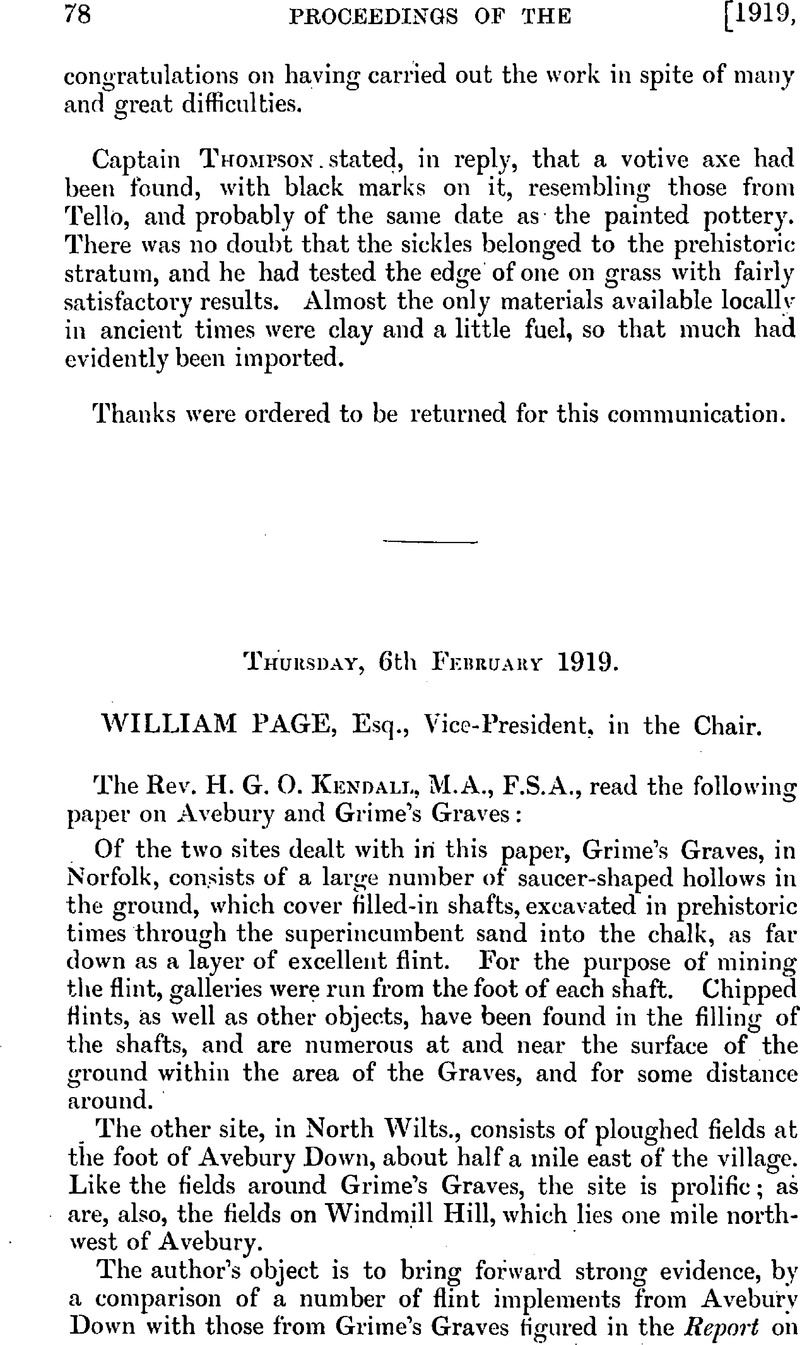No CrossRef data available.
Article contents
Thursday, 6th February 1919
Published online by Cambridge University Press: 10 May 2010
Abstract

- Type
- Proceedings
- Information
- Copyright
- Copyright © The Society of Antiquaries of London 1919
References
page 79 note 1 The following nomenclature is used :— Ages : Palaeolithic (and others earlier), Neolithic, Bronze, etc. The Palaeolithic Age is divided into Drift and Cave Divisions, and the Divisions into Periods. There are Periods within the earlier and later ages also.
page 80 note 1 Proceedings of the Prehistoric Society of East Anglia, vol. ii, part iii, p. 339.
page 81 note 1 Proceedings of the Prehistoric Society of East Anglia, vol. ii, part ii, p. 230 ; vol. ii, part iii, p. 563.
page 81 note 2 A recent search on Windmill Hill revealed only three or four nodules as much as 7 in. by 3 in. by 1½ in. extreme measurements. The remainder were, for the most part, much smaller.
page 82 note 1 It may be useful to give one or two measurements. A large chopper from Avebury Down measures 3¾ in. by 3 in. by 2¾ in. A similar implement from Windmill Hill is 3⅛ in. by 2⅛in. by 2![]() in. A large scraper from Avebury Down is 2¾ in. by 2 in., and one from Windmill Hill measures 2⅝ in. by
in. A large scraper from Avebury Down is 2¾ in. by 2 in., and one from Windmill Hill measures 2⅝ in. by ![]() in. ; extreme measurements.
in. ; extreme measurements.
page 84 note 1 All the specimens from Avebury Down discussed in this paper were exhibited when it was read, and others besides. All but a very few may now be seen in the British Museum. The present condition of the printing trade unhappily prevents the reproduction here of more than a small proportion of their number.
page 100 note 1 Since this paper was read a wide scraper, similar to fig. 76, G. G. Report, has come to light, but without facetted butt or large bulb. That, however, is immaterial, inasmuch as facetted butts are as common as at Grime's Graves, and there is a sufficiency, also, of large bulbs.
page 106 note 1 Proc. Preh. Soc. E. Anglia, vol. i, p. 210.
page 106 note 2 Revue de l'École d'Anthropologie de Paris, 1906, p. 170.




